Absolutely necessary in my opinion. In fact, I love yoga props!
But that was not always the case. I remember in my early yoga days not wanting to use a yoga block under my lower hand in Trikonasana or to sit on a blanket in Paschimottanasana. Why? Because I wanted to be “good” at yoga, and yoga props, in my head, would indicate that I could not perform some asana without help, i.e. I was not “good”.
I can’t really say when the revelation came to me that yoga props actually were pretty cool. They can make your arms longer, create space in your lower back, help you open up your heart space, ease your breathing and most importantly they give you hope. And, using the props do indicate that you, in fact, are “good” at yoga. How deep you can go into an asana with you body is not important at all. What’s important is how deep you go into the asana mentally and emotionally. And, using props during the asana practice shows you are on the mat with your mind and heart, not only with your body. That’s what I call advanced.
What’s also important to keep in mind is that yoga props are not only used to make the asana more accessible for us, but to bring more challenge into the practice. For example doing Supta Virasana with a block under the pelvis will make the asana more intense. And again, if you are on the mat with all of you – body, mind, heart – you will understand when you will need a yoga prop and when it would be too much. But, let’s concentrate today on making our practice safer and more accessible for us by using yoga props.
Here are couple of examples how I use yoga props in my asana practice:
Yoga Blocks
(I have at least 5 pairs of yoga blocks at home. You could say I’m obsessed…)
When sitting in meditation or practicing Pranayama I like to sit on a block. Sitting higher aligns my pelvis optimal and I can keep my spine long and my chest open. You could also sit on a pillow or a blanket, but I like the stable feeling of my foundation when I sit on a yoga block.
When I practice Parshvakonasana or Trikonasana or any other asymmetrical standing pose with one hand on the floor, I almost always have a block under my lower hand. This will keep my side body long, my spine neutral and will enable an opening of the chest toward the sky. Using a block here also allows my breath to flow more freely.
In standing forward folds like Uttanasana and Parsvottanasana I place both of my hands on blocks. This will take the unnecessary pressure off my hamstrings and help me activate my legs and core more to make the stretch safer.
When doing Bakasana I like to enter the pose with my feet on a block. This will make my arms longer and help me make the pose more stable. It will also make it easier to lift my feet off the floor.
When practicing backbends like Ustrasana, Setubandha Sarvangasana or Dhanurasana I place a block between my inner thighs. Squeezing the block will help me activate my legs. This will take the pressure off my lower back in the backbend.
Blanket
I usually sit on a blanket when practicing Paschimottanasana or Upavistha Konasana or any other seated forward fold. You could also sit on a block but for my body a block is a bit too high and a folded blanket feels perfect. When sitting higher I can align my pelvis and when folding forward I can be sure that my spine and all the vertebrae are optimal aligned.
Sometimes, when practicing poses with one or both knees on the floor like Anjaynasana or Ustrasana, I place a blanket under my knees. If you have sensitive knees it is a good idea to bolster them so that you can concentrate on the actions of the pose and not on aching knees.
When doing Child’s Pose, Balasana, I find it quite nice to have a blanket roll tucked behind my knees between my hamstrings and calves. Especially if I have a sensitive-knee-day. This will take the pressure off my knees.
In Savasana I sometimes tuck myself in a blanket. It gives me a feeling of being held, by the floor and by the blanket. This helps me relax.
Strap
Strap will make your arms longer in any pose. F.ex. in hamstring stretches like Paschimottanasana and Utthita Hasta Padangusthasana as well as in bound poses like Baddha Parsvakonasana a strap will ease the pose, take unnecessary pressure off the joints and let your breath flow freely.
Sometimes it is nice to have a strap around the thighs just above the knees when doing backbends like Setubandha Sarvangasana or Urdhva Dhanurasana. The strap will prevent too much outer rotation of the hip and allow more space in the lower spine.
Wall
Practicing almost any standing pose at the wall will make you feel stable on your mat. In Virabhadrasana II f.ex. pushing the outer edge of the back foot agains the wall makes the pose strong. Or, pushing the front knee in Virabhadrasana I against the wall lets you align your pelvis and bring ease into the pose.
Doing one legged balancing poses at the wall is always a good idea. Having the back of your body against the wall in Ardha Chandrasana lets you stay longer in the pose since you do not have to concentrate on balancing. This will also help you with your alignment in the pose. I also love doing Vrksasana at the wall, especially on a wobbly day.
And of course practicing inversions like Sirsasana, Pincha Mayurasana or Adho Mukha Vrksasana at the wall will take the fear of falling over away since you know the wall will be there and catch you if needed.
Bolster
I use a bolster mainly for relaxation. It is nice to have a bolster under the knees in Savasana to relax the lower back. Sometimes I will place a bolster on my pelvis in Savasana. This will help me feel more grounded and relaxed.
Chair
Want to know how I practice with a chair? Check out the Chair Yoga Sessions in the Gotta Yoga App!
How do you use yoga props?
This article was written by:
Anu Visuri
Anu Visuri, yoga teacher and co-founder of Gotta Joga
Certified Anusara® yoga teacher, Yoga Alliance (E-RYT 500 & YACEP).
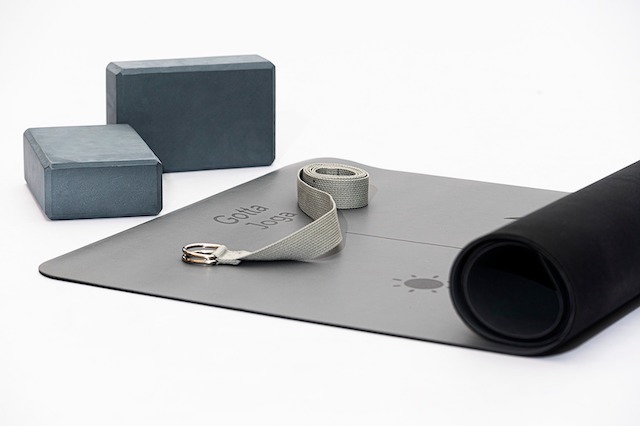

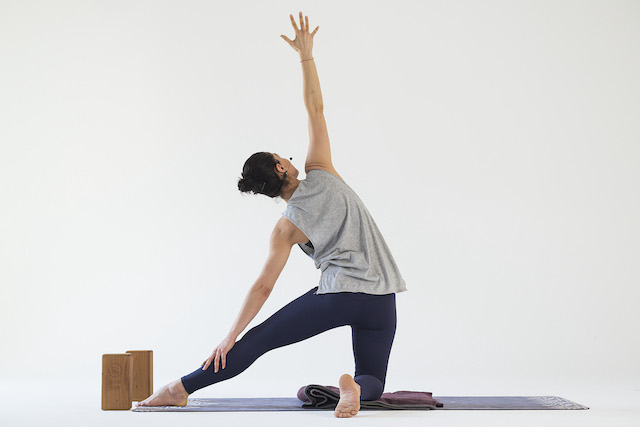
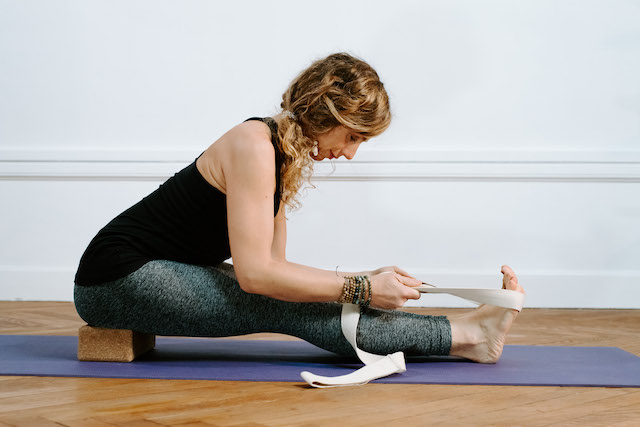
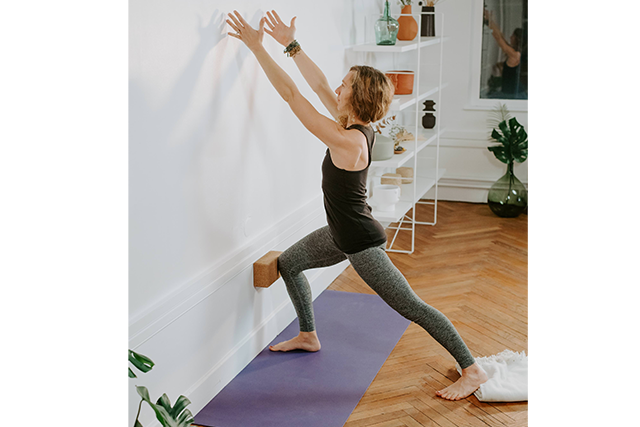
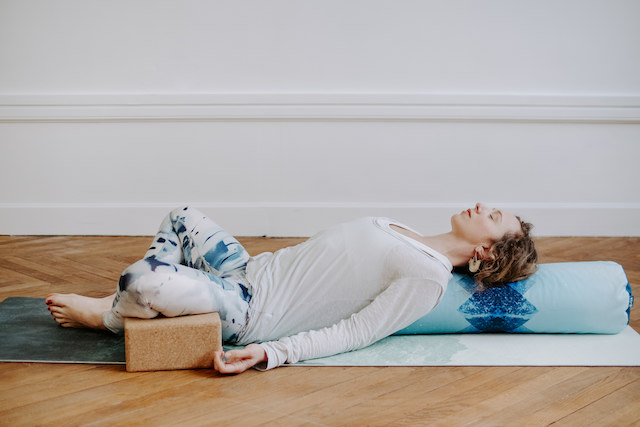
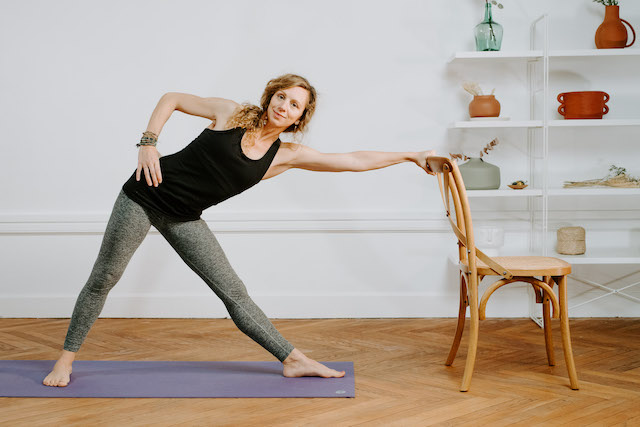
As a beginner I would say the mat, towel, comfy clothes and perhaps the strap, are the most common articles for beginners. bY the way, would you recommend the pillow in here ?
https://youtu.be/Is1xmfI0clg
Thanks for your good advice
I feel more free now to use props